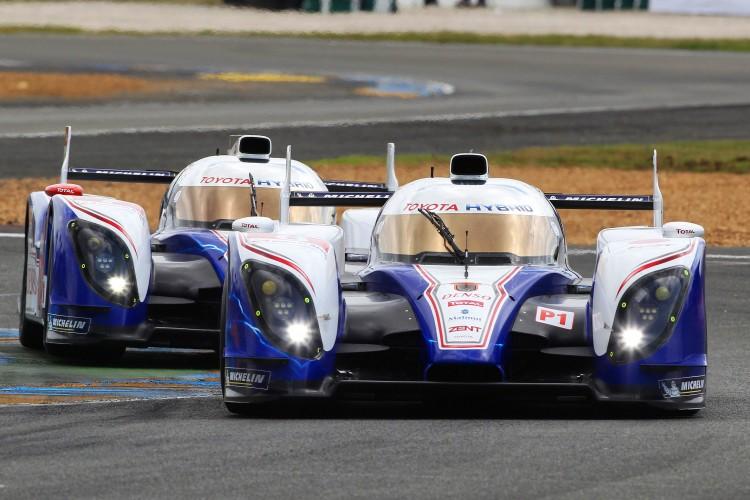It was at the Le Mans 24, the toughest of all sports car races, that Toyota debuted its new TS030 hybrid in the Le Mans Prototype 1 class, a technically complicated car in the fastest class in the race. A class dominated for over a decade by German giant Audi.
Just getting to Le Mans was a trial for the Japanese manufacturer. The team’s only chassis was destroyed in an April 4 testing accident, forcing the team to cancel its planned race debut at Spa on May 5. The team had to hustle to get two cars ready for Le Mans.
The team’s final long-distance test, on May 11, revealed problems which could be fixed, but not retested, in time for the 24-hour race. So, confident but unready, Toyota took its two cars to France to do battle with the four-car Audi armada.
The results were a foregone conclusion. The only questions were which of the four Audis would win, and how long would the Toyotas last?
The answers were disastrous for Toyota. The No. 8 car, driven by Anthony Davidson, crashed heavily in the sixth hour of the race after being hit by a slower car. The Toyota was totaled, and Davidson suffered two fractured vertebrae.
Then, on the restart after the wreck, Kaz Nakajima in the #No. 7 Toyota tried to squeeze between a couple of cars and slammed into the Nissan DeltaWing, sending the DeltaWing into the wall and damaging the Toyota enough to force it to pit.
This started a long string of pit stops for the remaining Toyota, as first its alternator failed and eventually its motor packed in.
The Toyota completed just 40 more laps after the accident before retiring in the eleventh hour.
Months of hard work, millions of dollars, and both cars out by one-quarter distance. The two Toyotas covered only 216 laps with its two cars—that is, they gained only 216 laps’ worth of data with which to improve the car for future events. Not an auspicious beginning, by some measures—in fact, for most teams, this would be a disastrous outing.
Unprecedented Achievement
Some say Toyota should have cruised around the track, well behind the sturm und drang (strife and struggle) at the front, staying safe and amassing data, rolling home behind most other cars but at least making it to the finish. Others see what Toyota accomplished as an expression of amazing potential.
So, what did Toyota achieve?
For one thing, Toyota proved its cars could run with, and pass, the fastest cars on the track. Just before Anthony Davidson’s accident, Nicolas LaPierre in the No. 8 Toyota took the race lead from Benôit Tréluyer in the No. 1 Audi. When the caution period started, Toyota was in first place, though it lost the lead in the pits.






